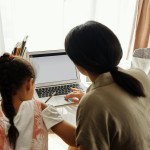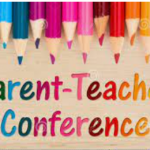In July of 2020, parents of pre-k students had to make a decision that would impact the education of their child for the future. Do I send my child to kindergarten now, in the middle of this pandemic, or do I wait a year for when things “settle down”? It was a difficult decision for some families. We were starting the school year online, for an undetermined amount of time. What would kindergarten be like online? How can the teachers make this work? How can we make this work for our family? Will my child be able to learn everything they need to learn through a computer screen? The problem was that we didn’t have the answers to all these questions. The other problem is that things haven’t “settled down” yet and it is a year later.
Last year, our school district ended up distance learning for the first six weeks of school. We returned in person 100% with mitigation strategies in place. When we returned in person, my class size was fourteen students. The class size was ideal for interventions and attempting to close the gap from online learning. Parents in our district were able to choose in-person or online but they could return in person whenever they felt comfortable doing so. The problem with that was we had kids coming and going all year from our roster.
Typically, the fourth quarter of kindergarten is the most wonderful time of the year! The students are becoming independent and gaining confidence and beginning to read. Many parents decided that it was time to send their kids to school to “get used to it” before first grade. In March of 2021, the students that were returning in person were not ready for such independence. I was looking forward to a fresh start this school year. The 2021-2022 school year was going to be that fresh start.
I knew the class sizes would be bigger this year. Some parents waited to send their kids to kindergarten. At the same time, I still had students testing in early for early entrance. This means that at the beginning of the school year, I had students that were four-, five- and six years old all in the same class. What I didn’t anticipate was the range of academic, social, and emotional levels of my students. The discrepancies in maturity and developmental readiness are extremely evident. It will be interesting to see if these discrepancies will continue through elementary, middle, and high school.
The standards remain the same. Standards don’t care how old or young you are. This is where the magical parts of teaching come into play. We find ways to meet the needs of all students, all day, all year, no matter the age, academic, social, or emotional levels of our students.
I am sure that five or ten years from now, someone will do a study about the effects of Covid in kindergarten during these school years. I look forward to reading it, or even commenting on someone else’s blog about it.
Image from istock.com









